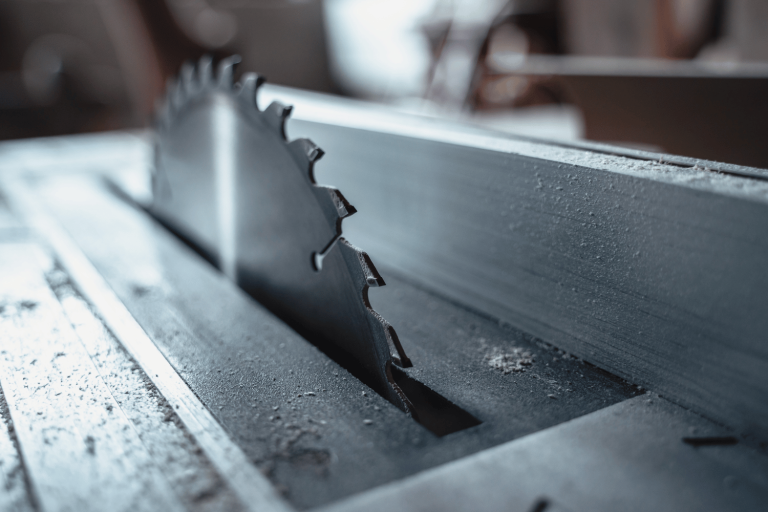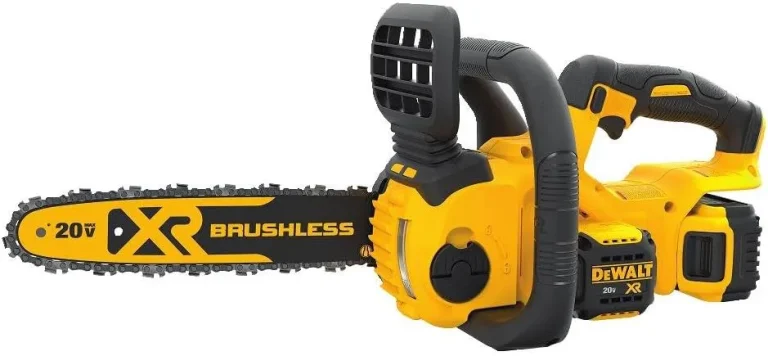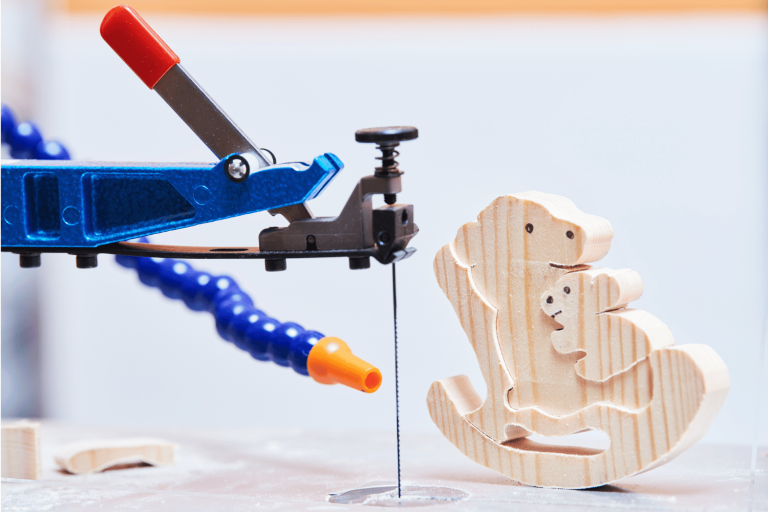Band Saw Vs Table Saw – Which Do You Need More?
Are you a woodworking enthusiast or professional looking to invest in a saw but unsure whether to go for a bandsaw or a table saw? Well, you’re in luck! In this article, we will explore the differences and advantages of these two common types of saws used in woodworking.
Firstly, let’s delve into the basics of both band saws and table saws. A band saw consists of a long, continuous blade that is stretched between two wheels. It is primarily used for making curved cuts and intricate shapes due to its ability to maneuver smoothly through various materials.
On the other hand, a table saw features a circular blade that protrudes above the surface of a flat table. It is known for its precision when it comes to straight cuts, making it ideal for ripping large pieces of wood or cutting boards with accuracy.
As we continue our exploration, we will discuss factors such as precision, versatility, safety features, cutting capabilities, and more. By the end of this article, you will have gained valuable insights into which type of saw – be it a bandsaw or a table saw – will better suit your specific needs and projects.
So let’s dive right in and discover which one you need more!
Key Takeaways
- Band saws offer more built-in safety features compared to table saws
- Band saws are safer for woodworkers who prioritize safety
- Band saws excel at cutting curved or irregular shapes
- Table saws are better suited for straight edge cuts and long rip cuts

Band Saw Basics
Band saws, with their continuous blades and ability to make curved cuts and complex shapes, offer a versatile alternative to table saws when it comes to woodworking projects. Unlike the table saw, which uses a blade with teeth for straight cuts, the band saw uses a continuous loop of blade that moves in a vertical or horizontal motion. This allows for more flexibility when it comes to cutting curved or irregular shapes.
Whether you need to make intricate cuts for furniture pieces or create decorative patterns, the band saw is an excellent choice. It can also handle angled cuts with ease, making it ideal for projects that require beveled edges or compound angles. With a band saw, you have the freedom to explore your creativity and achieve unique designs that may not be possible with a table saw.
Now let’s transition into the next section about table saw basics. While the band saw offers versatility and precision in curved cuts, there are certain situations where a table saw may be more suitable.
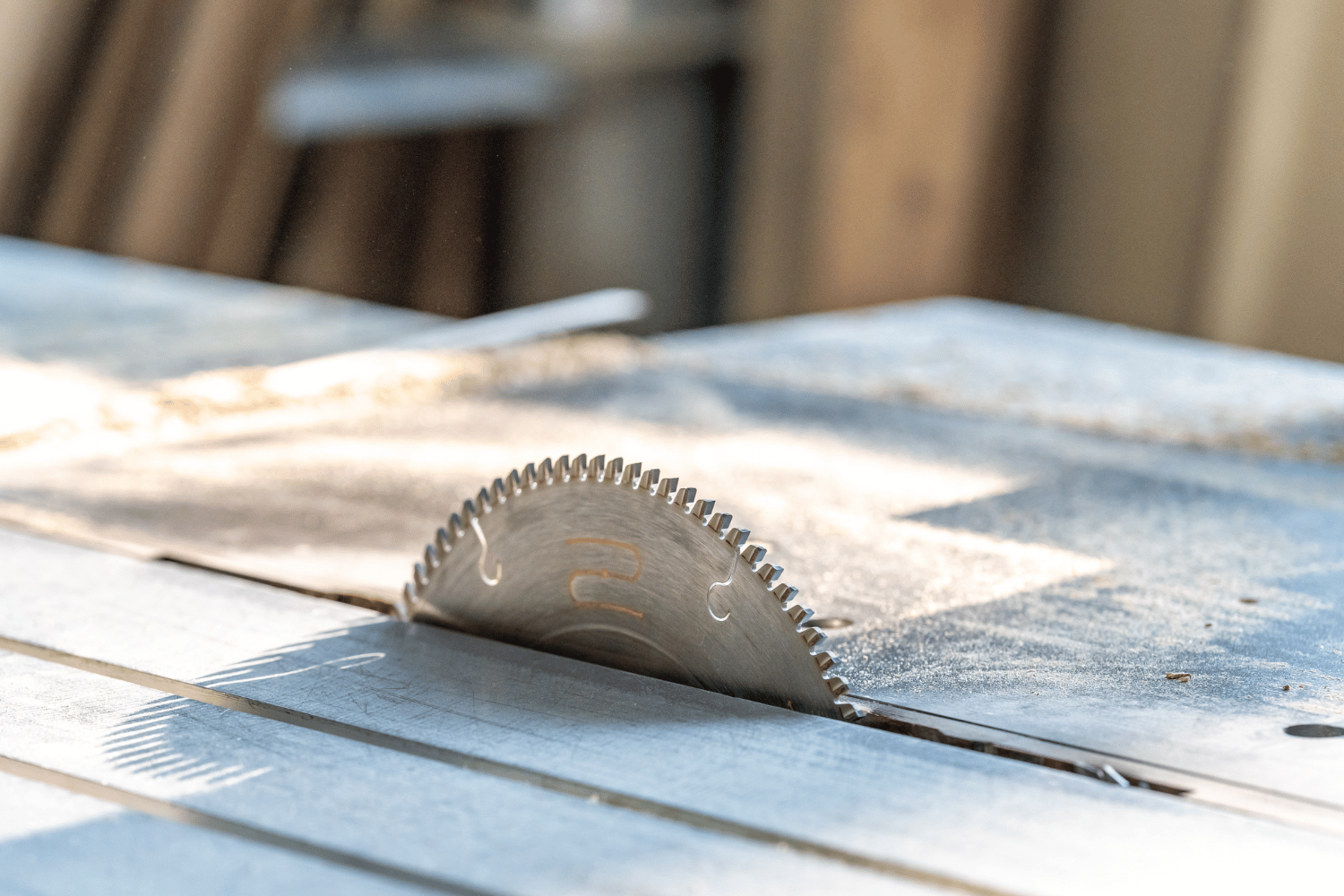
Table Saw Basics
One important factor to consider when choosing a saw is the level of precision and versatility it offers. The table saw, known for its precision, is a powerful tool commonly used by woodworkers.
With its ability to make straight cuts and handle long boards, the table saw is ideal for tasks like ripping large pieces of wood. It uses a circular saw blade to make clean and accurate cuts, making it perfect for projects that require precise measurements.
On the other hand, if you need to make curved or irregular cuts, the band saw is your go-to power tool. Unlike the table saw, the band saw uses a continuous blade that allows for greater flexibility in cutting curves and circles. This makes it an excellent choice for woodworkers who often work with complex shapes.
When considering which type of saw you need more, think about the specific tasks you will be performing. If you primarily work on straight edge cuts and long rip cuts, then a table saw would be more suitable for your needs. Its accuracy and ability to handle larger pieces of wood make it a reliable choice in these situations.
However, if your projects involve cutting curves or intricate designs into wood, then investing in a band saw would be wise. Its versatility and ability to make accurate curved cuts will greatly benefit any woodworker who frequently works with complex shapes.
In the next section about ‘types and styles’, we will explore further details about different types of table saws and band saws available in the market without writing another step.
Types and Styles
If you’re looking to expand your woodworking toolbox, it’s important to explore the different types and styles of saws available.
When it comes to table saws, there are three main styles: contractor, cabinet, and hybrid models. The type of table saw you choose will depend on your specific needs and budget.
Table saws use blades with teeth that are designed for straight cuts, making them ideal for tasks like ripping boards or cutting large sheets of plywood. They can also make deeper cuts compared to bandsaws. Additionally, table saws have the advantage of a miter gauge which allows for accurate angled cuts and more precise miter joints. However, it’s worth noting that while table saws provide great versatility and precision, they may not always offer the same level of blade protection as bandsaws.
Moving on to bandsaws, these tools use a continuous blade that allows for cutting curved or irregular shapes with ease. Bandsaws are known for their accuracy when cutting curves and circles, making them perfect for tasks like creating intricate designs or shaping woodwork pieces. The blades on bandsaws also tend to last longer and require less maintenance compared to table saw blades.
Another advantage is that bandsaws are generally more compact than table saws, making them easier to store in smaller workshops or garages where space is limited. In terms of safety features, bandsaws typically come equipped with a guard and an adjustable depth stop which adds an extra layer of protection during use.
So if you’re someone who frequently works with curved cuts or complex shapes in your woodworking projects, a band saw might be the better option for you.
With an understanding of the types and styles available for both table saws and bandsaws, let’s dive into the advantages of using a table saw in the next section without wasting any time!
Advantages of Table Saws
When working with a table saw, woodworkers can experience the precision and versatility it offers, allowing them to effortlessly make straight cuts and handle long boards for their projects. Table saws are known for their accuracy in creating straight edge cuts, making them perfect for tasks like cutting plywood sheets or trimming boards to size. With the ability to adjust the blade height and angle, table saws also excel at making compound angles, providing woodworkers with greater flexibility in their designs.
To give you a better understanding of the advantages of using a table saw over a band saw, let’s take a look at this comparison:
| Advantages of Table Saws | Advantages of Band Saws |
| Precise straight cuts | Ideal for curved shapes |
| Can handle long boards | Typically have more safety features |
| Capable of compound angles | Blades last longer |
As you can see from the table above, table saws offer several key advantages that may be relevant to your woodworking needs. However, it’s important to note that these advantages are contextually dependent on your specific project requirements. Now let’s delve into the next section where we will explore the advantages of band saws.
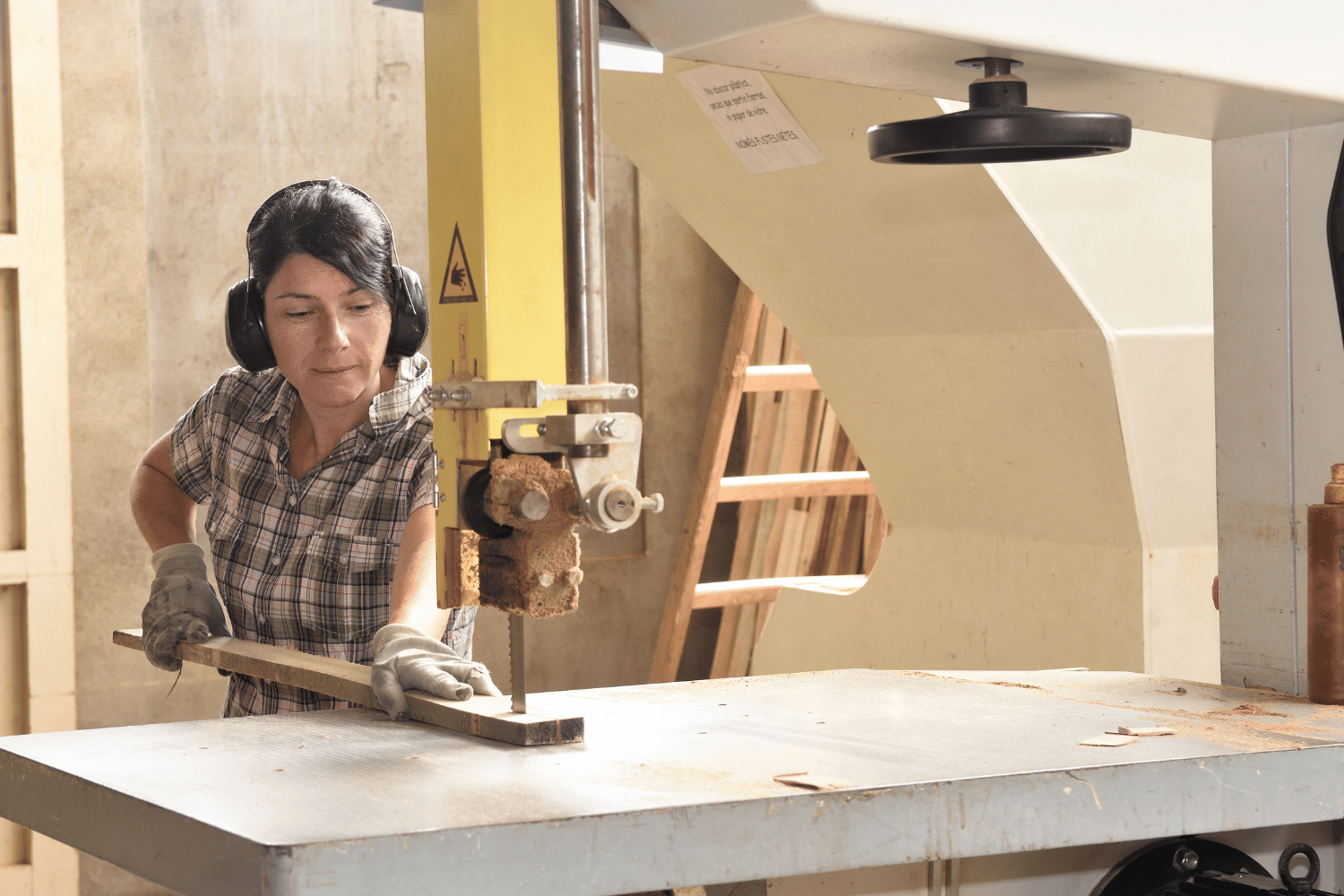
Advantages of Band Saws
Discover the advantages of using a band saw for your woodworking projects, allowing you to effortlessly create intricate curved shapes and enjoy the benefits of longer-lasting blades.
When comparing band saws to table saws, the advantages of band saws become clear. Band saws excel at cutting curved or irregular shapes with their continuous blade, giving you the ability to tackle complex designs that would be challenging on a table saw. The versatility of a band saw allows you to make precise cuts in various materials, making it an essential tool for furniture makers and woodworkers who often work with intricate designs.
Another advantage of using a band saw is the longevity of its blades. Band saw blades are designed to last longer compared to table saw blades, saving you time and money on replacements and maintenance. This durability also contributes to cleaner cuts with less tear-out or splintering, ensuring high-quality results for your projects.
Additionally, band saws offer more safety features than table saws, providing peace of mind while working on your woodworking tasks. Transitioning into the subsequent section about safety features: With enhanced safety measures in place, let’s explore how band saws can provide a secure work environment for craftsmen like yourself.

Safety Features
When it comes to safety features, band saws have the upper hand over table saws. Band saws are considered safer than table saws because they come equipped with more safety features. For example, band saws typically have a guard and an adjustable depth stop for added protection while cutting. This means that you can work with peace of mind knowing that your fingers are less likely to come into contact with the blade. In contrast, while table saws may provide precision and versatility, they may not always provide the same level of blade protection as band saws.
To further illustrate the difference in safety features between band saws and table saws, let’s take a look at this comparison:
| Safety Features | Band Saws | Table Saws |
| Blade Guard | Yes | Optional |
| Adjustable Depth Stop | Yes | No |
As you can see from the table above, band saws offer more built-in safety features compared to table saws. This makes them a safer option for woodworkers who prioritize their well-being while working on their projects.
Now that we’ve discussed the advantages of band saws, including their safety features, it’s time to delve into how to choose the right saw for your needs without writing ‘step’.
Table Saw Vs Band Saw – Choosing the Right Saw
Deciding on the perfect saw depends entirely on your specific woodworking needs and project requirements.
When choosing between a band saw and a table saw, it’s important to consider the type of cuts you’ll be making. Band saws excel at cutting curved or irregular shapes due to their continuous blade, while table saws are better suited for straight edge cuts and long rip cuts.
If you frequently work with intricate designs that require curved cuts, a band saw would be the ideal choice. Its versatility allows you to create complex shapes with ease using a band saw blade.
On the other hand, if precision and versatility are your top priorities, a table saw may be more suitable for your needs. Table saws use circular blades with teeth for straight cuts and can make deeper cuts than band saws. They are also known for their ability to handle long boards and make compound angles. Additionally, table saw blades tend to last longer and require less maintenance compared to band saw blades. However, it’s worth noting that operating a table saw requires two hands to guide the material being cut, which may not always provide the same level of blade protection as a band saw’s guard and adjustable depth stop.
Ultimately, when comparing band saws and table saws, it’s essential to consider the specific requirements of your woodworking projects. Assessing factors such as the type of cuts you’ll be making, the materials you’ll be working with, and your experience level will help guide you towards choosing the right tool for your needs.
Whether it is the versatility of a band saw or the precision of a table saw that aligns better with your woodworking goals, both options can provide a safe work environment when used correctly and in accordance with proper safety precautions.
Frequently Asked Questions
Can a table saw make curved cuts?
Yes, a table saw can make curved cuts with the help of a jig or sled. However, it is not as accurate or efficient as a bandsaw when it comes to cutting curves and complex shapes.
How often do bandsaw blades need to be replaced?
Bandsaw blades need to be replaced based on usage and the type of material being cut. Generally, they can last for several months to a year with regular use, but it’s important to monitor blade wear and replace when necessary.
Which type of saw is better for cutting plywood?
For cutting plywood, a table saw is better. It provides precision and straight cuts, which are essential for working with plywood. Its blade with teeth can handle the thickness of plywood more effectively than a bandsaw.
Are there any specific safety precautions to take when using a table saw?
When using a table saw, there are several important safety precautions to take. Always wear safety goggles and use push sticks or featherboards to keep your hands away from the blade. Keep the table clear of debris and maintain proper blade alignment.
Can a bandsaw be used to make rip cuts?
Yes, a bandsaw can be used to make rip cuts. While table saws are better suited for straight edge and long rip cuts, bandsaws can still handle rip cuts with the right blade and setup.


